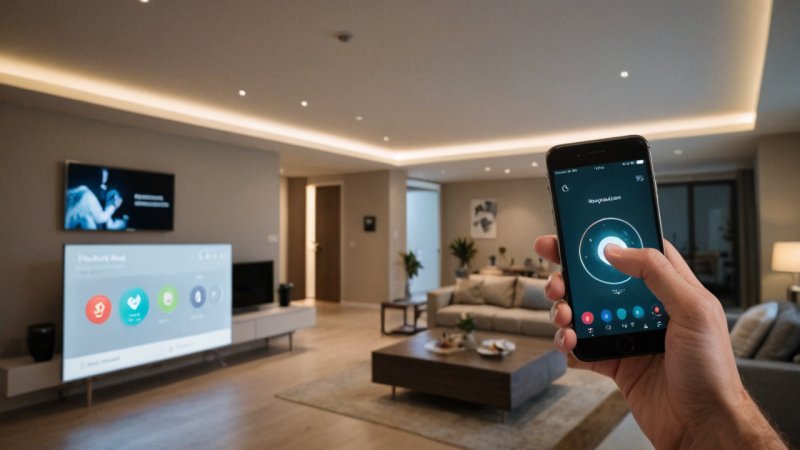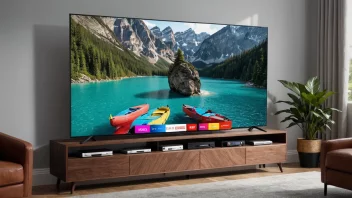In today's fast-paced world, the concept of a smart home has evolved from a futuristic dream to a practical reality for many. With the rise of innovative technology, men are increasingly looking to enhance their living spaces with smart devices that offer convenience, security, and efficiency. This ultimate guide will walk you through the essential components of a smart home, helping you make informed decisions about the devices and systems that will transform your home into a modern marvel.
Understanding Smart Home Technology
Before diving into the setup process, it's important to understand what smart home technology encompasses. Essentially, a smart home is equipped with devices that can be controlled remotely or automatically, often through a central hub or a smartphone app. These devices can include anything from smart lights and thermostats to security cameras and appliances. Smart technology can significantly improve your quality of life by automating mundane tasks and providing real-time information about your home.
Choosing the Right Smart Home Ecosystem
When it comes to setting up a smart home, the first step is choosing the right ecosystem. The most popular ecosystems include:
- Amazon Alexa: A versatile platform with a wide range of compatible devices, Alexa allows for voice control, routines, and integration with various smart devices.
- Google Assistant: Known for its robust search capabilities, Google Assistant offers similar features to Alexa and integrates seamlessly with Google services.
- Apple HomeKit: Ideal for Apple users, HomeKit focuses on privacy and security while providing an easy-to-use interface through the Apple ecosystem.
Consider your existing devices and preferences when selecting an ecosystem. For example, if you already own Apple products, HomeKit may be the most convenient choice.
Essential Smart Home Devices
Once you've chosen your ecosystem, it’s time to start building your smart home with essential devices:
- Smart Lighting: Smart bulbs and light strips allow you to control brightness and color remotely. Look for options that can be programmed to adjust based on your routine.
- Smart Thermostat: A smart thermostat learns your heating and cooling preferences, optimizing energy use while keeping you comfortable. Popular options include Nest and Ecobee.
- Smart Security Systems: Incorporating cameras, doorbells, and alarms can help secure your home. Consider systems that offer mobile alerts and integration with your smart devices.
- Smart Speakers: Devices like Amazon Echo or Google Nest serve as the central hub for controlling your smart home devices using voice commands.
- Smart Plugs: These allow you to control non-smart devices remotely and can be used to schedule operations or monitor usage.
Setting Up Your Smart Home
With the devices selected, here’s how to set them up effectively:
1. Establish a Reliable Wi-Fi Network
Ensure that your home has a robust Wi-Fi network, as most smart devices rely on internet connectivity. Consider upgrading your router or adding Wi-Fi extenders to eliminate dead zones.
2. Install Your Devices
Follow the manufacturer's instructions for installing your smart devices. Many devices require a simple app download to get started. For security cameras, find optimal locations that cover key entry points.
3. Connect to Your Ecosystem
Once installed, connect your devices to the chosen ecosystem. This usually involves linking your devices through the app, allowing them to communicate with one another.
4. Create Routines and Automations
Take advantage of the automation features offered by your ecosystem. For example, you can set your lights to turn on at sunset or adjust your thermostat when you leave for work. Routines can help streamline your daily activities.
5. Ensure Security
Security is crucial in a smart home. Regularly update device firmware and use strong, unique passwords. Consider enabling two-factor authentication for added protection.
Tips for Enhancing Your Smart Home Experience
To make the most of your smart home, consider the following tips:
- Stay Informed: Keep up with the latest smart home technology trends, as new devices and features are constantly emerging.
- Experiment with Integrations: Explore ways to integrate your devices. For instance, have your lights flash when your security system detects motion.
- Think About Energy Efficiency: Look for devices that provide energy usage reports to help you monitor and reduce consumption.
Common Challenges and How to Overcome Them
As with any technology, setting up a smart home can come with its challenges. Here are some common issues and solutions:
- Device Compatibility: Not all devices work seamlessly together. Research compatibility before purchasing to ensure a cohesive setup.
- Connectivity Issues: If devices frequently disconnect, consider using a mesh Wi-Fi system to improve coverage.
- Overwhelming Choices: With so many options available, start with a few essential devices and gradually expand your system based on your needs.
Conclusion
Setting up a smart home can greatly enhance your quality of life, offering convenience, security, and energy efficiency. By understanding the technology, choosing the right ecosystem, and carefully selecting essential devices, you can create a modern living space tailored to your needs. Remember to stay informed about the latest advancements, and don't hesitate to experiment with new devices and features. With the right approach, your smart home can become an invaluable part of your daily routine.






